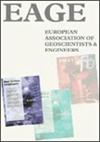将探地雷达系统参数与规管排放限值联系起来
IF 1.6
4区 地球科学
Q3 GEOCHEMISTRY & GEOPHYSICS
引用次数: 0
摘要
探地雷达(GPR)在许多司法管辖区受到超宽带(UWB)发射限制的监管。这些法规的定义采用了更适合传统窄带无线电发射机的概念和术语。此外,排放限制是基于有限的定量事实信息,并对探地雷达技术的进步造成了严格的限制。关于实际探地雷达设备排放的实际理论和实验信息通常不可用,用户对其与监管要求的关系了解甚少。如果未来要提出一个不那么严格的排放水平的令人信服的论点,就必须填补这一信息空白。此外,现行法规有可能在未来引发对排放限值的进一步审查,这可能对GPR的使用不利。在本文中,我们介绍了将脉冲时域GPR仪器行为转换为“调节”参数所需的基本步骤。为了实现这一点,我们还采用三维(3D)有限差分时域(FDTD)数值建模来模拟放置在半空间表面或其上方高度的偶极天线周围的瞬态电磁场变化,以说明对传感器高度和地面介电常数的依赖性。最终目标是为更明智的规则制定奠定基础,如果监管标准受到审查以进行修订和进一步的用户理解。这篇文章受版权保护。保留所有权利本文章由计算机程序翻译,如有差异,请以英文原文为准。
Relating GPR System Parameters to Regulatory Emissions Limits
Ground penetrating radar (GPR) is regulated regarding emission limits for ultra‐wideband (UWB) in a number of jurisdictions. The definitions of these regulations employ concepts and terminology that are more suited to traditional narrow band radio transmitters. Further, the emissions limits were based on limited quantitative factual information and have resulted in stringent limitations on GPR technology advancement. Factual theoretical and experimental information on the emissions from actual GPR devices is not generally available and the relationship with regulatory requirements is poorly understood by users. This information gap must be filled if a compelling argument for less stringent emissions levels is to be mounted in the future. Moreover, the current regulations have the potential to trigger further review of emission limits in the future which could be detrimental to the use of GPR. In this paper, we present the basic steps entailed in translating impulse time‐domain GPR instrument behaviour into ‘regulatory’ parameters. To achieve this, we also employ three‐dimensional (3D) finite‐difference time‐domain (FDTD) numerical modelling to simulate the transient electromagnetic (EM) field variation around dipole antennas placed on the surface of a half‐space or at a height over it to illustrate the dependency on sensor height and ground permittivity. The ultimate goal is to establish the foundation for more sensible rule making, if and when, the regulatory standards come under scrutiny for revision and further user understanding.This article is protected by copyright. All rights reserved
求助全文
通过发布文献求助,成功后即可免费获取论文全文。
去求助
来源期刊

Near Surface Geophysics
地学-地球化学与地球物理
CiteScore
3.60
自引率
12.50%
发文量
42
审稿时长
6-12 weeks
期刊介绍:
Near Surface Geophysics is an international journal for the publication of research and development in geophysics applied to near surface. It places emphasis on geological, hydrogeological, geotechnical, environmental, engineering, mining, archaeological, agricultural and other applications of geophysics as well as physical soil and rock properties. Geophysical and geoscientific case histories with innovative use of geophysical techniques are welcome, which may include improvements on instrumentation, measurements, data acquisition and processing, modelling, inversion, interpretation, project management and multidisciplinary use. The papers should also be understandable to those who use geophysical data but are not necessarily geophysicists.
 求助内容:
求助内容: 应助结果提醒方式:
应助结果提醒方式:


